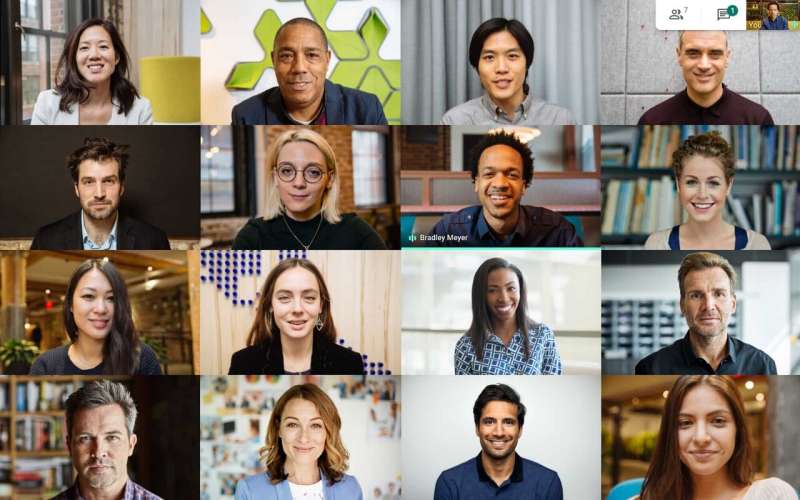Noise-cancellation comes to Google Meet

Google is making noise this week—or should we say it’s making no noise—with its rollout of a new feature for its video-conferencing app Meet.
Google Suite’s director of product management Serge Lachapelle on Monday demonstrated a noise-cancelation feature that will enable Meet attendees to hold sessions free of distracting extraneous noise.
The “denoiser” is able to distinguish between the speaker’s voice and other voices, as well as non-human sounds such as barking dogs, the clicking of keyboard keys or a squeaky chair.
The move marks another key step for Google in the suddenly attractive video-conferencing battleground where tech giants are vying for workers globally who have suddenly turned to remote conferencing to conduct vital business in the era of COVID-19. Google made video-conferencing available for free just last April; Microsoft Teams announced a free version of its tele-conferencing app just last week.
Both Google and Microsoft are targeting the video-conference leader Zoom Technologies, which has seen usage skyrocket by a factor of 30 between December 2019 and the end of April 2020. Zoom, which has long lured new users with a free option, leads the pack, estimating 300 million daily users as of April, the most recent date for which statistics are available. Microsoft trails with 200 million users in the same period, and Google is in third place with 100 million users. The companies make money on businesses and high-usage individual users.
Lachapelle told VentureBeat this week that their interest in noise-cancelation dates to 2017 with the acquisition of Limes Audio, the Swedish business specializing in improving the quality of voice calls. “With this acquisition, we got some amazing audio experts into our Stockholm office,” Lachapelle said.
But interestingly, the spark that prompted research specifically into noise-cancelation was a series of small nuisances that occurred during conference calls between Google offices in Sweden and the United States.
“I’m based out of Stockholm,” Lachapelle said. “When we meet with the U.S., it’s usually around this time”—morning in the United States, evening in Sweden. “You’ll hear a lot of cling, cling, cling and weird little noises of people eating their breakfast or eating their dinners or taking late meetings at home and kids screaming and all. It was really that that triggered off this project about a year and a half ago.”
He recognizes that despite the success of the current implementation of noise-cancelation, refinements needs to be made. There are instances in which removing certain non-human noises will negatively impact a call.
“It works well on a door slamming, it works well on dogs barking,” he said. “But we don’t want to go overboard and start canceling things out that shouldn’t be canceled. Sometimes it’s good for you to hear that I’m taking a deep breath, or those more natural noises. So this is going to be a project that’s going to go on for many years as we tune it to become better and better and better.”
In fact, the point was driven home at the close of a video-conference call during which the feature was demonstrated.
“When we did our first demo of this to the whole team, people broke out in applause and it canceled out the applause,” Lachapelle said. “That’s when we understood, ‘Oh, we’re going to need to have a controller to turn this on and off in the settings because there’s probably going to be some use cases where you really don’t want your noise to be removed.'”
Lachapelle notes that the denoiser operates entirely from the cloud, ensuring minimal delay and relieving users of RAM-intensive processing demands.
“Manipulating media in the cloud, just five, six, seven years ago could add 200 milliseconds delay, 300 milliseconds delay,” Lachapelle said. “But now with these TensorFlow processors and basically the way that our infrastructure is built, we discovered that we could do media manipulation in real time and add sometimes only around 20 milliseconds of delay. So that’s the road we took.”
The feature, first announced earlier this year, is being introduced gradually to G Suite users beginning this week and will eventually be available on Android and iOS devices.
Conclusion: So above is the Noise-cancellation comes to Google Meet article. Hopefully with this article you can help you in life, always follow and read our good articles on the website: Ngoinhanho101.com





